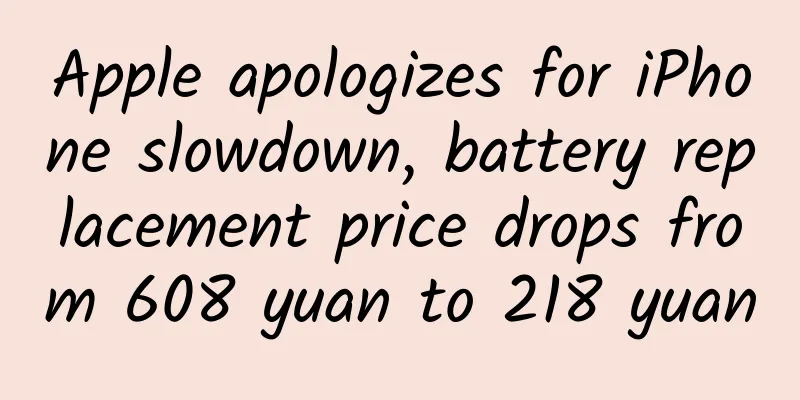Why did the Samsung Galaxy Fold fail? Well-known disassembly agency iFixit gives their opinion

|
Samsung's Galaxy Fold foldable phone could not be released on time due to a screen failure. The well-known disassembly organization iFixit studied the cause of the screen failure and gave some of their speculations. The beautiful folding screen is broken After the release of Samsung Galaxy Fold, it has received widespread attention from the media and users. Last week, the media got the first batch of test machines and tried them out. However, some media found that after tearing off the plastic protective layer covering the flexible screen, the screen had problems, and some even went black. The well-known disassembly organization iFixit analyzed this issue. They did not disassemble the phone, but talked to several media outlets that had problems with the screen and put forward their own speculations. We have summarized some of iFixit's views, which may explain why the Galaxy Fold screen has problems: 1. OLED screens are inherently fragile OLED screens are inherently fragile, and currently only this material can meet the needs of foldable screens. If there is no strong material covering it, such as Gorilla Glass, problems are inevitable. 2. Samsung did not do a good job of sealing, which made the device easy to get dusty. Even very small dust can cause problems with OLED screens, not to mention that the Galaxy Fold's folding screen is not completely sealed, making it very easy for dust to get in. This part is very easy to get dusty. iFixit's disassembly engineer Sam Lionheart believes that the exposed part of the OLED screen on this phone ultimately brought disaster to the Galaxy Fold: "Unless there is some magical film inside (to protect it), dust will definitely get in." It’s also worth noting that Samsung doesn’t provide an IP rating for the Galaxy Fold to prove its water and dust resistance. 3. There are problems with the packaging of the folding screen, especially after dust enters Some people saw a "bump" under the Fold's screen. After consulting Samsung, he turned off the phone and put it aside. The next day, when he checked the phone, he saw two bulges under the screen again. A bulge appears under the screen (Photo from The Verge) This has to do with the structure. A thinly encapsulated OLED screen bends inward, which may put pressure on objects that come in. If dirt gets on the back of the folded part, it will also gather around these hinges and make contact with the OLED layer more easily, forming a "bump." Samsung said in a press release on Monday that preliminary findings of the reported issues showed "impact on the top and bottom exposed areas of the hinge" and an instance of "a substance found inside the device that affects screen performance." - This probably also indirectly indicates that "substances" can easily enter the back of the screen. 4. The protective film itself is a hidden danger The problem with the protective film is not entirely Samsung's fault, but it does remind us that unprotected OLED screens are very susceptible to damage when under pressure. In other words, the film itself is a hidden danger, and many testers don't even know that it cannot be removed. 5. Samsung’s testing environment was too mechanical, so no problems were found Before the media got the Galaxy Fold, Samsung released a promotional video, claiming that the foldable phone had been tested 200,000 times. But this was only in a laboratory environment, using a mechanical device to repeatedly open/close the screen with the same force and angle. In fact, the real usage environment is much more complicated. Generally, when people open this phone, they will inevitably press the bottom of the screen with their thumb. Some testers claimed that they actually used the screen for 1,000 times and some marks appeared. Samsung tests foldable cases in lab Samsung's test machines are run in a lab, but humans use these devices in the real world, opening them in a hurry on the dining table, outdoors, and on the subway. The dusty environment and various opening angles are much harsher than the lab. In general, the problem is that the machine Samsung used to test the Galaxy Fold is too systematic. In other words, it cannot fully simulate the user's usage scenarios, which explains why Samsung did not find any problems during the test. ***, iFixit raised some questions about this phone. Why build a device with a fragile OLED screen, with such small tolerances between the screen and the hinge, and so many ways for dust and moisture to get in? And why not use it in a real environment for testing, but use a robot instead? You know, pockets and fingers feel completely different from robots, not to mention that everyone has different ways of opening and closing. There are no answers to these questions for now. We can only wait for Samsung to give a convincing test result. |
<<: Siri shortcuts and other features on iOS will also be moved to macOS
Recommend
How can products get more users to pay? Share 3 tips!
When a product enters the mature stage and has en...
As the college entrance examination approaches, a big competition of brain-boosting foods! Walnuts are at the bottom of the list? You would never have thought that the first one would be
The college entrance examination is coming soon, ...
Pinduoduo activities attract new growth matrix!
From time to time, you can see some screen-sweepi...
If you travel back to the Song Dynasty, how can you generate electricity?
Browsing our phones may be a very important reaso...
A large hatchback with a 3-meter wheelbase and free AI visual driving as standard, can the Xiaopeng P7+ challenge the Xiaomi SU7?
In September 2024, Xpeng Motors delivered 21,352 ...
Billion-dollar gambling debt default: Dong Mingzhu "marketed" Lei Jun
At the end of 2013, at the CCTV Economic Person o...
Cow "matrix": giving cows a virtual grassland, away from the pain of crowded farms
Although the fourth installment of The Matrix suf...
Huawei App Market search keyword promotion!
1. Introduction to search keyword promotion As on...
What is the purpose of following hot topics and taking advantage of trends every day?
Now when it comes to chasing hot topics and lever...
Xpeng: 4,224 units delivered in November 2020, a record high
On December 1, 2020, Xpeng Motors announced that ...
The new energy vehicle market is facing “wolves in front and tigers behind”. What are the latest countermeasures for domestic automakers?
Since 2018, my country's new energy vehicle m...
Experts say: This is an iOS development skill that you can’t miss (Part 2)
I changed to a new factory, and it's been les...
Under market pressure, the development of mechanical hard disks may be difficult to continue
Solid-state drives are becoming more and more pop...
Is there really a need to panic about the wave of mobile phone OEM factory closures?
In the past two days, the technology circle has b...
What is a good retention rate? 3 cases to analyze the core direction of user retention
The identification standard of retained users rec...









